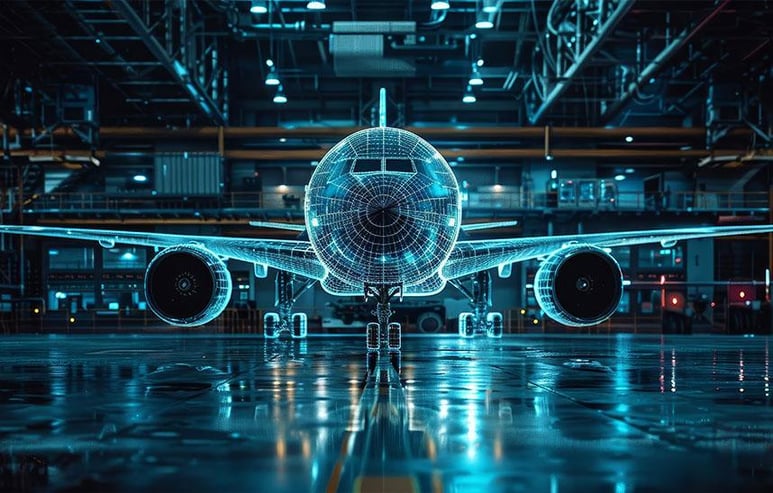In the dynamic world of aviation, real-time avionics applications play a crucial role in enhancing the performance, safety, and efficiency of modern aircraft. As technology continues to evolve, the importance of these applications is becoming increasingly evident. This article delves into the significance of real-time avionics applications, exploring their impact on the aerospace industry, and detailing their implementation in modern aviation systems.

The Role of Real-Time Avionics
The integration of real-time avionics into aircraft systems is pivotal for various reasons. These systems ensure timely data processing, which is essential for maintaining flight safety and optimizing operational efficiency. In essence, they form the backbone of modern aerospace technology, facilitating seamless communication between different aircraft components.
Enhancing Safety and Reliability
One of the primary benefits of real-time avionics applications is their ability to enhance safety. By providing immediate feedback and real-time updates, these systems help pilots and ground control teams make informed decisions rapidly. This capability is particularly vital during critical flight phases, such as take-off and landing.
Operational Efficiency
Moreover, real-time avionics contribute significantly to operational efficiency. Airlines and aircraft operators can optimize fuel consumption, reduce delays, and improve overall flight operations. For instance, by using real-time data, flight paths can be adjusted to avoid adverse weather conditions, thereby saving time and resources.
Applications in Modern Aircraft
The applications of real-time avionics are vast and varied. From commercial airliners to military jets, these systems are implemented across various types of aircraft to enhance performance and ensure safety. Learn more about aerospace advancements here.
Commercial Aviation
In commercial aviation, real-time avionics systems are indispensable. They manage everything from autopilot functions to in-flight entertainment systems. These applications also assist in navigation, communication, and monitoring of aircraft health, ensuring that flights are not only safe but also comfortable for passengers.
Military Applications
In military aviation, the stakes are even higher. Real-time avionics systems provide advanced capabilities, such as threat detection, target acquisition, and weapons systems management. These technologies are crucial for mission success and aircraft survivability in hostile environments.
Challenges and Solutions
While the benefits of real-time avionics are clear, there are challenges associated with their implementation. These include the need for constant updates, cybersecurity threats, and the complexity of integrating new technologies with existing systems. However, the industry is continuously developing solutions to overcome these hurdles, ensuring that real-time avionics remain at the forefront of aviation technology.
Continuous Updates
One of the primary challenges is the need for continuous updates. As technology evolves, avionic systems must be regularly updated to maintain compatibility and functionality. This process requires significant resources and expertise.
Cybersecurity
Cybersecurity is another critical concern. With the increasing reliance on digital systems, the risk of cyber threats has grown. To mitigate these risks, robust security measures and protocols are essential.
For more insights on aerospace systems, visit Aerospace Systems Engineering.
Future Trends in Real-Time Avionics
The future of real-time avionics is promising, with advancements in artificial intelligence and machine learning poised to revolutionize the industry. These technologies will enable even more sophisticated data processing capabilities, further enhancing the safety and efficiency of aircraft operations.
AI and Machine Learning
Artificial intelligence and machine learning are set to play a significant role in the evolution of real-time avionics. These technologies will facilitate predictive maintenance, ensuring that potential issues are identified and addressed before they become critical.
Integration with IoT
The integration of the Internet of Things (IoT) into avionics systems is another trend to watch. IoT connectivity will enable real-time data sharing between aircraft and ground control, improving decision-making processes and enhancing overall flight safety.
For a deeper dive into aerospace electronics, you can explore Aerospace Electronics Development.
Conclusion
In conclusion, real-time avionics applications are transforming the aerospace industry. By enhancing safety, improving operational efficiency, and driving technological advancements, these systems are set to remain a cornerstone of modern aviation. As technology continues to evolve, the potential for innovation in this field is limitless, promising a future where air travel is safer and more efficient than ever before.

FAQ
What are real-time avionics applications?
Real-time avionics applications are systems integrated into aircraft to process data instantaneously, supporting flight operations by enhancing safety and efficiency.
How do real-time avionics improve safety?
These systems provide immediate feedback and updates, enabling pilots to make informed decisions quickly, particularly during critical flight phases.
What are the challenges of implementing real-time avionics?
Challenges include the need for continuous updates, cybersecurity threats, and the complexity of integrating new technologies with existing systems.
To read more on the subject, check out the Aerospace Electronics Testing.


